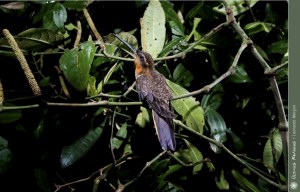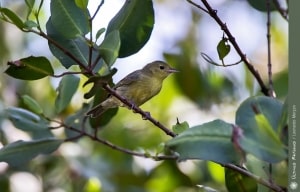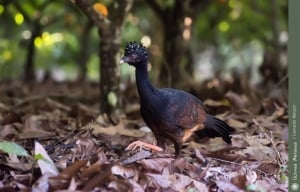
My name is Leonardo Merçon. I am a nature photographer from Brazil implementing projects in several areas related to environmental awareness and the documentary recording of Brazil’s natural resources. Ever since I can imagine I wanted to be a nature photographer supporting environmental awareness.
The Saw-billed Hermit (Ramphodon naevius) is a hummingbird from southeastern Brazil. It is around 14–16 cm long and is one of the heaviest of the hermits; its straight bill has a hooked tip. It lives in humid forests, where it aggressively defends feeding routes from individuals of its own species as well as other hummingbirds. It is currently considered near-threatened, since it has a restricted range in threatened Atlantic forests.
2 Photos
The Red-browed Amazon (Amazona rhodocorytha) is a species of parrot in the Psittacidae family. It is endemic to Atlantic Forest in eastern Brazil. It is threatened by habitat loss and capture for the wild parrot trade. Less than 10% of original forest cover remains in Bahia and Espírito Santo, and only 2% in Alagoas, primarily because of conversion to plantations and pastureland.
2 Photos
The Bicolored Conebill (Conirostrum bicolor) is a small passerine bird. This member of the tanager family is a resident breeder in South America from Colombia, Venezuela and Trinidad south and east to the Guianas, northeast Peru and Brazil. Its habitat is coastal mangrove swamps and neighbouring woodlands.Based on a model of future deforestation in the Amazon basin, it is suspected that the population of this species will decline by 25-30% over the next three generations. The Bicolored Conebill is 11.4 cm long and weighs 11 g. The adult is grey-blue above and buff-tinged grey below, with red eyes, pink legs and a sharp, pointed bill. The primary flight feathers are bluish with brown edgings. The sexes are similar, although the female may be a little duller, but immature birds are greenish above and have pale yellow underparts.
2 Photos
Crax blumenbachii was formerly widespread in east Brazil, from Bahia south through Espírito Santo and east Minas Gerais to Rio de Janeiro. Wild populations are currently known from eight reserves, with strongholds of considerably more than 60 birds in Sooretama Biological Reserve. It is largely terrestrial in tall, lowland humid forest. The species has suffered chronic habitat loss and hunting pressure.
5 Photos




Leave a Reply